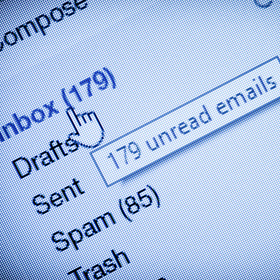
I couldn’t believe what I was reading.
The subject of the email read: “Terror last night brings profit delight.”
Inside the email was a description of how the author woke up in the dead of night, drenched with sweat, in utter “TERROR” (capitalization as in the original….).
Readers had been demanding to hear about the bonus for his new program, and even “threatening” him!
Now, as email openings go, it was pretty dramatic. And the rhyming subject line is powerful.
There was just one problem.
The email, from a marketer I generally admire, went out just hours after the terror attacks in Paris in November 2015, in which more than 130 people died.
It was possibly the most inappropriate email of all time.
I thought of it recently because I’ve been discussing marketing automation with the students in my annual course on digital marketing.
Email Marketing Automation can be an amazing tool
Generally, you want to pre-program as many emails as possible, setting them up in advance and allowing your system to send them either at specific times or when your readers have taken certain actions.
It allows your marketing to run in the background, generating results, even without any effort on your part.
You can create highly targeted, personalised campaigns, because your readers get the exact right emails at the right time. And it’s a highly efficient way to work, helping you get the most out of every piece of content you create.
You’ve guessed it, there is a but…
Studies have shown that companies that automate emails see a much higher ROI.
But……
Contrary to a lot of the advice out there…..
You CANNOT ‘Set and forget’.
You need to stay mindful of which content is due to go out when
You have to stay conscious at all times that there are emails running in the background, which might require adjusting.
When you don’t, that’s when you end up with disasters like the “terror” email. (A few hours later, after a slew of complaints, the marketer sent a contrite email, explaining that the email had been set up far in advance.)

I can think of so many other examples of automation fails… From Tesco’s now infamous tweet, at the height of the horse meat scandal, that its staff were going to “hit the hay” at the end of a long day to numerous emails I’ve received asking me to make appointments with staff members no longer at the company, making offers that are no longer valid, and on one memorable occasion, excitedly predicting the big marketing trends of 2014. (It was 2017.)
Reputations can be ruined through these kinds of oversights.
So, what can you do to prevent an email marketing disaster?
In a few weeks’ time, we are going to be reviewing every email set up in an automation for one of our clients – there are hundreds of them – to make sure that they are still valid. At the same time, we’ll make sure that they are set up in the best possible way to generate conversions, re-ordering, re-writing and filling in gaps where necessary.
It’s an exercise I suggest you do regularly if you have automations set up, just to be on the safe side, and to guarantee the best outcomes.
Automations are great – they are the lifeblood of a good email marketing program. But leave them to run neglected and forgotten, and they will bring the very opposite of “profit delight”.
Have you ever received a badly timed email? Have you ever sent one? I’d love to hear about your experiences with email marketing automation in the comments section below.
Miriam Shaviv is author of Discover how to write high-converting emails in 10 minutes or less – Guaranteed!
She is director of content at Brainstorm Digital, which helps companies generate leads, enquiries and sales online.






